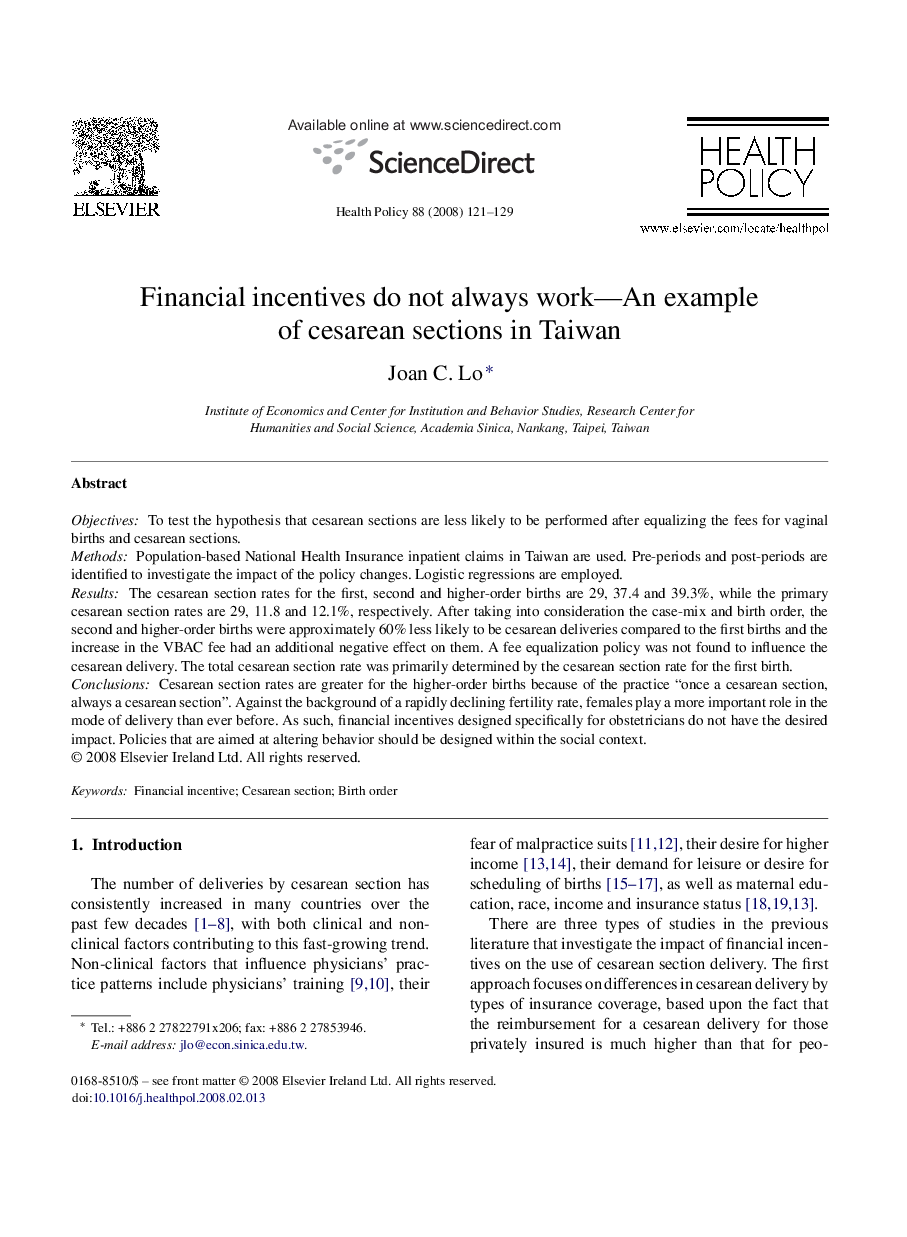| کد مقاله | کد نشریه | سال انتشار | مقاله انگلیسی | نسخه تمام متن |
|---|---|---|---|---|
| 4198684 | 1279072 | 2008 | 9 صفحه PDF | دانلود رایگان |

ObjectivesTo test the hypothesis that cesarean sections are less likely to be performed after equalizing the fees for vaginal births and cesarean sections.MethodsPopulation-based National Health Insurance inpatient claims in Taiwan are used. Pre-periods and post-periods are identified to investigate the impact of the policy changes. Logistic regressions are employed.ResultsThe cesarean section rates for the first, second and higher-order births are 29, 37.4 and 39.3%, while the primary cesarean section rates are 29, 11.8 and 12.1%, respectively. After taking into consideration the case-mix and birth order, the second and higher-order births were approximately 60% less likely to be cesarean deliveries compared to the first births and the increase in the VBAC fee had an additional negative effect on them. A fee equalization policy was not found to influence the cesarean delivery. The total cesarean section rate was primarily determined by the cesarean section rate for the first birth.ConclusionsCesarean section rates are greater for the higher-order births because of the practice “once a cesarean section, always a cesarean section”. Against the background of a rapidly declining fertility rate, females play a more important role in the mode of delivery than ever before. As such, financial incentives designed specifically for obstetricians do not have the desired impact. Policies that are aimed at altering behavior should be designed within the social context.
Journal: Health Policy - Volume 88, Issue 1, October 2008, Pages 121–129